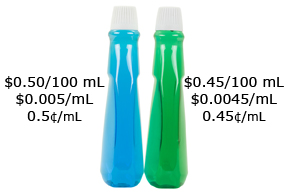Lesson 1
1. Lesson 1
1.10. Lesson 1 Summary
Module 6: Proportional Reasoning
Lesson 1 Summary
The expression “comparing apples to oranges” illustrates that when comparing items, you first have to identify the purpose of your comparison. In some situations, a rate can be used to interpret or compare items. In others, a unit rate is more appropriate. For example, if you were trying to determine which brand of mouthwash was the best buy, you might determine the cost per 100 mL as opposed to the cost per millilitre. Even though the rates are equivalent, it is easier to visualize 100 mL of mouthwash as opposed to 1 mL of mouthwash.

Hemera/Thinkstock
Likewise, the lowest rate is not always the most appropriate rate. When determining which item is cheaper, you are looking for the lowest rate. Internet connection speed is an example of a situation where you want a higher rate. The faster the rate at which information is transferred over the computer network, the happier you are likely to be.
There are many factors that can influence a rate. These factors may decrease or increase a rate. For example, the rate at which a vehicle travels (speed) can be affected by road conditions, the weather, experience of the driver, and condition of the vehicle.
In Lesson 2 you will use graphs to represent rates and continue to use rates to solve problems.